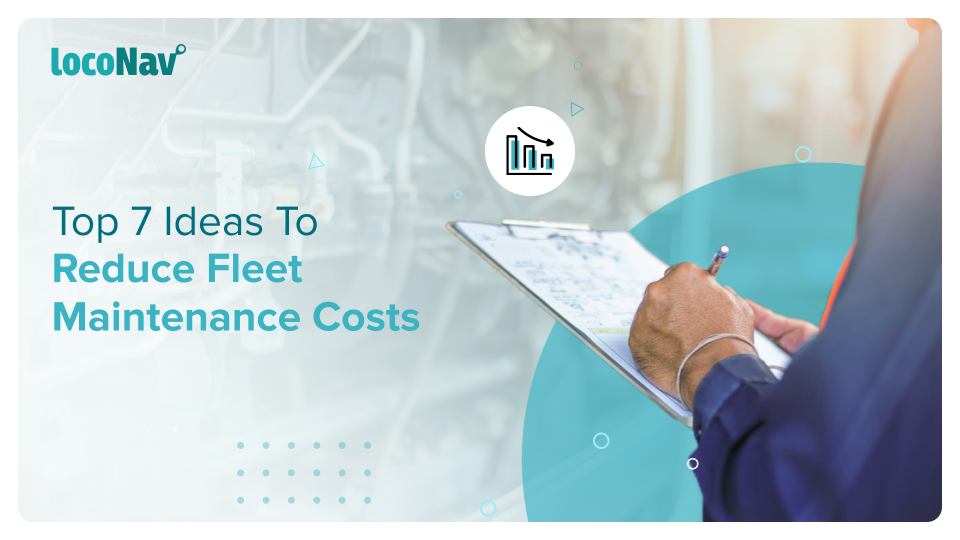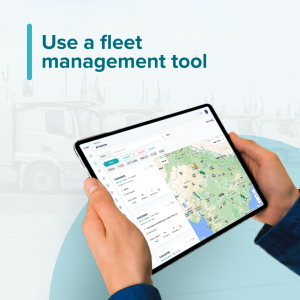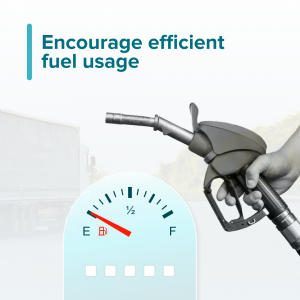

Fleet maintenance costs far outweigh the purchase prices. Managing a large fleet of corporate vehicles comes at a significant cost to your firm. Commonly there are 4 types of fleet maintenance costs: Repairs, Capital, Asset Depreciation, and Compliance & Licenses. Although your fleet is critical for providing prompt service, your operations will provide significantly smaller profits if your vehicles are rapidly depleting your bank account. The good news is that you may reduce your fleet maintenance costs, particularly with GPS fleet tracking and video telematics technologies.
Controlling fleet maintenance costs may seem like an insurmountable task but it totally isn’t. Here are our top 7 tips to help you get started:
Use a fleet management tool
Operating a fleet will always be costly, but fleet management solutions can apply strategies to keep costs under control. Because driver behavior and maintenance costs are substantial expense producers, fleet management and telematics systems and practices that track and decrease these charges are often a worthwhile investment and a fantastic place to start when reducing fleet maintenance costs.
Management procedures that make use of route optimization tools and appropriate strategies will help ensure that operating costs are kept to a minimum.
Track driving behavior
The manner in which fleet drivers operate their cars can have a major influence on fuel economy and fleet lifetime.
Many current telematics systems make it simple to track events such as forceful braking and idling, which can enhance vehicle wear and tear as well as fuel usage. They can even make drivers ineligible for some city rules. These tools can assist any company in reducing risky and wasteful driving behavior.
 Optimize driver routes
Optimize driver routes
Optimizing routes is one of the most effective strategies to cut fuel expenditures and fleet maintenance costs. Many advanced fleet scheduling and administration solutions include tools that assist managers in determining the quickest path for each work.
The technology analyses information such as fuel efficiency, traffic, and even weather conditions to dynamically organize routes so that drivers arrive at tasks as quickly as possible while using the least amount of fuel. Savings from optimized routes can pile up over time, assisting teams in cutting fleet expenses.
Create and follow a preventative maintenance plan
If you don’t do the most basic things, like follow maintenance schedules, it might come back to haunt you hard with unexpected expenses.
Because you can plan wisely and know how long a service gap will take, as well as the components, technicians, tools, and shop space required, scheduling maintenance work will give you predictable pricing. Planning a maintenance schedule – and, more crucially, carrying it out – results in higher quality work and increased shop productivity, which leads to cheaper costs.
Encourage efficient fuel usage
Training your personnel to drive more effectively could considerably reduce your fleet maintenance costs. To begin, aim for a higher fuel economy across your fleet. Vehicle part updates, as well as coaching your drivers in fuel-efficient techniques, can help on this front.
Second, you must discourage idling and forceful braking in your fuel economy training. You should also advise your drivers to turn off the vehicle’s ignition and remove their keys when they stop at petrol stations or rest breaks. Although each of these gas-saving strategies only saves a little amount of fuel, the total amount of fuel saved could be significant.
Leverage telematics
The implementation of a video telematics system can inspire drivers to be more answerable for their driving conduct and to be more conscious of undesirable practices. When drivers know you’re watching their driving habits, speed, and fuel usage, they’ll take better care of the company’s vehicles. As a result, you’ll see a reduction in fuel expenses, vehicle wear and tear, and possibly even a better reputation among the general public. The subsequent reduction in insurance premiums results in additional cuts in fleet maintenance costs.
Properly train drivers
A formal training day can help to solidify the recommended initiatives in the minds of your drivers and aid to communicate the benefits of more fuel-efficient driving. This will be most effective when combined with frequent reminders given through various means. Employ proper training videos and explain the importance of driver scores and set up an incentive program for the same.